You’ve probably heard that mindfulness is about having a quiet mind. So, when random thoughts drift in—like that text you sent, a career change, or a tough chat with a friend—you might find yourself trying even harder to push them away. At first, it seems to work… but then the worry hits again, often more intensely. This rebound isn’t your fault; it’s typical of thought suppression, as shown in laboratory studies. Decades of research, including the “white bear” experiments and follow-ups, demonstrate that trying to suppress a thought usually makes it more likely to come back later, the well-known ‘rebound effect’. [1]
Trying to control (stop it, push it away) your thoughts can actually make your brain focus even more on the very thing you’re trying not to think about.
The Lab Fact (you can use tonight)
Try this tonight: put the feeling into words. Literally say, “I’m feeling anxious,” or “I’m having the thought that…” When you name it, your brain treats it more like information and less like an alarm. Brain scans show that when you label an emotion as ‘just an emotion’, it switches on the brain’s regulatory “coach”, the ‘Amygdala’, and turns down the threat “alarm” [2][3]. In ACT (the Acceptance and Commitment Therapy), that’s cognitive defusion—adding “I’m having the thought that…” so the sentence loosens its grip. Even a simple defusion exercise can help make that nagging self-talk less convincing and less intense, sometimes after just one try. Once you put a name to it, it often loses its grip, making it easier to let go.
The 45–90-Second Play (no breathwork, no rituals)
1. Notice the thought.
Pick the exact line: *“I’m about to mess up this presentation.”*
2. Label it.
You can say or write: “I’m having the thought that I’m about to mess up this presentation.”
(The addition of this small label ‘I’m having a thought that’ is an effective defusion move supported by various experiments [4]
3. Just take the next move.
So once you have labeled your thought, you create enough space to choose what comes next. Take one tiny, values-aligned action: anything that you truly want to do and that may actually help in real time. And this action? It pulls you out of the tug-of-war. This is mindfulness training with ACT approach in three beats—notice → defuse from your thoughts → move. Many trials and meta-analyses show that ACT helps improve psychological flexibility. This means being able to act according to your morals and values, even as thoughts and feelings come and go.
Common traps (and upgrades)
We all tend to fall into a few familiar traps, but each one has a simple solution and a way to move forward.
Firstly, you may come across thoughts like “I’ll replace this bad thought with a good one.” So actually, you don’t need a ‘good’ thought to replace the ‘bad’ one; you simply need a better relationship with your thoughts in general. Simply notice them, label them for what they ‘the thoughts’, and then do one small next step.
Secondly, you come across “I’ll wait until my mind is silent to start.” So remember! Silence isn’t the ultimate goal; what truly matters is making progress even if it involves some noise. Take a moment to tag that sentence and spend two minutes taking action on it.
Thirdly, “If I don’t push it away, I’m giving in.” Pushing away is often a way we try to avoid feelings or thoughts, which is termed as ‘experiential avoidance.’ Reducing this avoidance is actually one of the helpful strategies used in anxiety treatments to help people feel better [5]. Remember, tagging isn’t giving up; it’s about paying strategic attention.
Three real-life scripts
First: Replaying a social situation.
After a conversation, you might find your mind quietly thinking, “Everyone thinks I was awkward.” Try naming it: “I’m having the thought that everyone thinks I was awkward.” Then, choose a small, value-driven step, like sending a quick thank-you or setting up a follow-up, and then gently close the app. That small gesture becomes your easy exit ramp.
Next: perfectionism at work or school.
The voice inside your mind says, “One typo will ruin my credibility.” Label/name it: “I’m having the thought that one typo ruins my credibility.” Share a solid draft first, then note down one thing to improve for next time. Remember, making progress is more important than endlessly polishing. Keep moving forward and learning along the way!
Finally: late‑night loops.
Your mind might say, “If I don’t solve this now, I won’t sleep.” Try gently labeling it: “I’m having the thought that…” and then put it on a Tomorrow List. Take a quick 60-second room reset, grab some water, set your alarm. Remember, at 2 a.m., the aim isn’t to solve the problem, but not to get hooked in your mind’s suggestions and let sleep come naturally.
Why this isn’t “toxic positivity”
You’re genuinely honest and thoughtful about what comes next, recognizing the facts without letting any single sentence run the show. That’s what ACT is all about: cultivating flexibility rather than striving for perfect control. As skills like defusion and acceptance grow, people often find it easier to do better across tough stuff like chronic pain, social anxiety, depression, not because the mind goes silent, but because you become more liberated to move towards what truly matters to you. [5]
Try it now in ‘MetaMindful’
Open the app and choose Defusion Session → Tag & Move. In less than three minutes:
You’ll capture a running thought
Then label it with the defusion prefix, “I’m having the thought that…”
and take one tiny action that best serves you. That’s a quick cycle: notice, defuse, move.
Your mind can make noise. You can make choices.


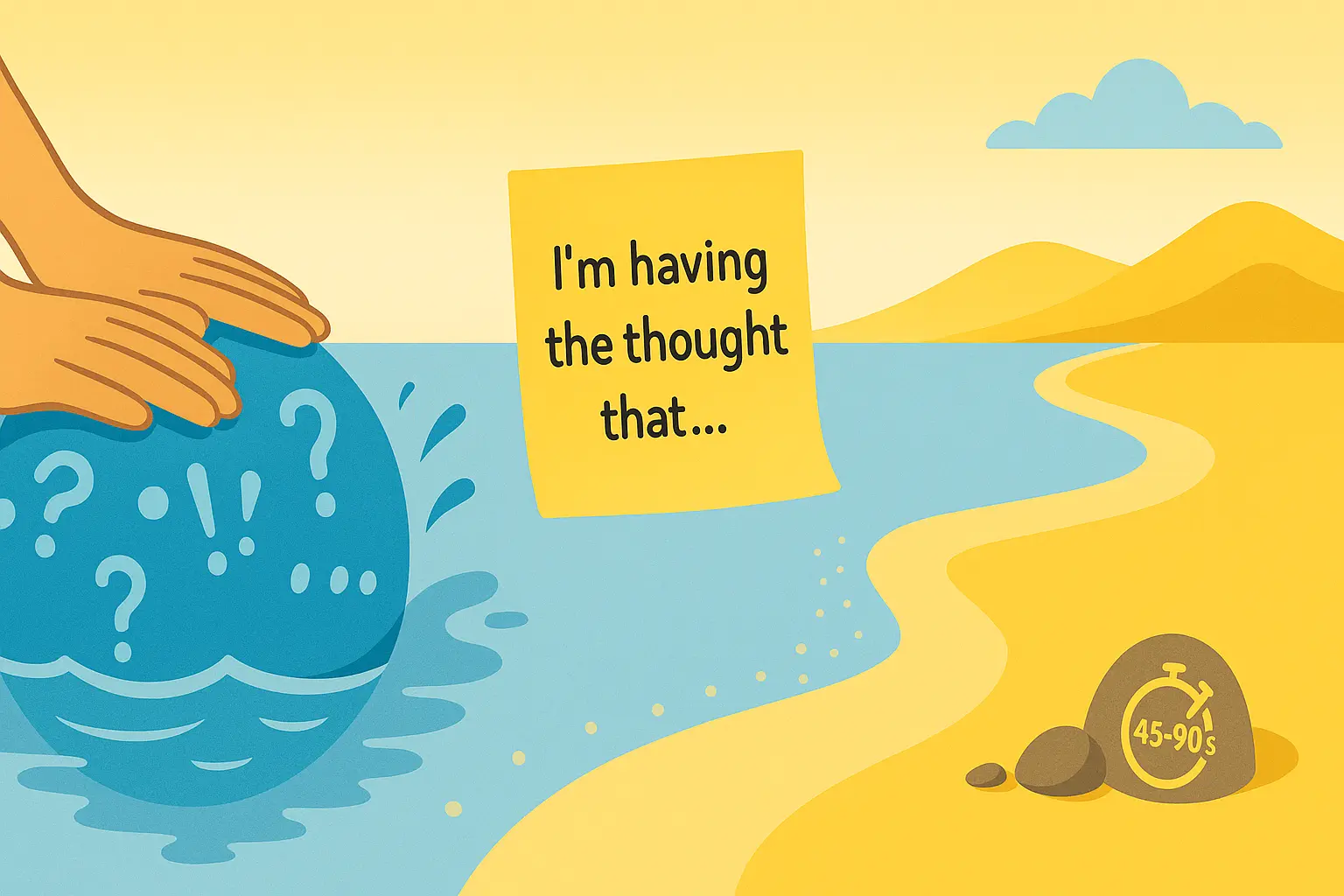

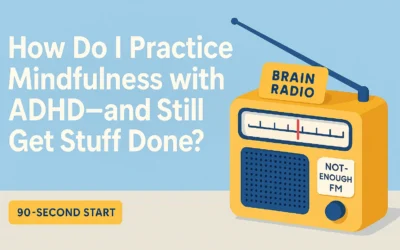

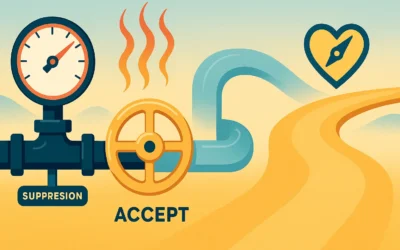
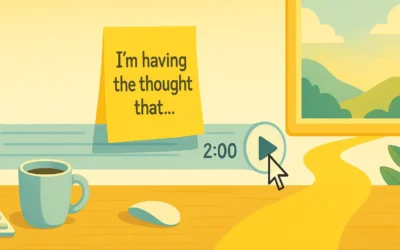
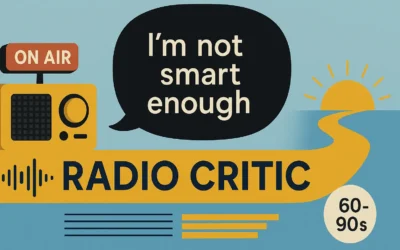
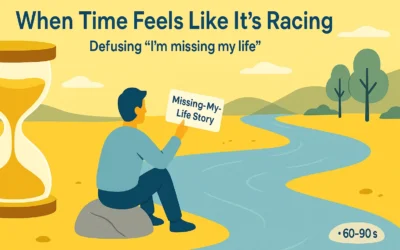
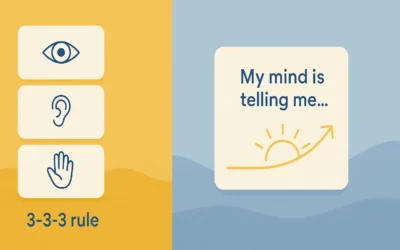

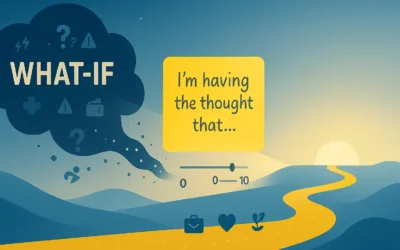
0 Comments